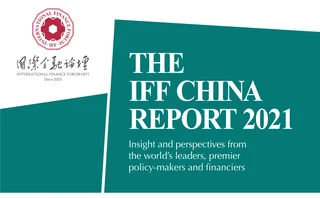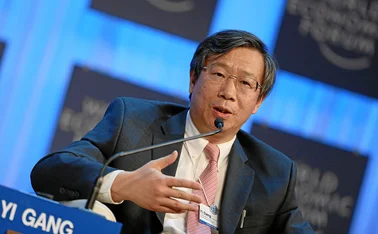
Green finance flourishes in Huzhou


Green finance in China was born in 2015, when the Central Committee of the Communist Party of China (CCCPC) and the State Council of the People’s Republic of China first proposed a plan for building China’s green finance system by issuing the Master plan of ecological civilisation system reform.
In 2016, seven government agencies – among them the People’s Bank of China, the National Development and Reform Commission, and the China Banking and Insurance Regulatory Commission (CBIRC) – published Guidelines for establishing the green financials system. At the Group of 20 summit held in the same year in Hangzhou, President Xi Jinping included green finance on the agenda for the first time.

In 2017, the State Council established national pilot zones for green finance reform and innovation in eight municipalities of five provinces – Guangdong, Zhejiang, Jiangxi, Guizhou and Xinjiang – to create experiments based on their own industrial features. In September 2020 at the UN, President Xi proposed China should hit peak carbon emissions before 2030 and achieve carbon neutrality by 2060, which required greater efforts from green finance, but injected stronger impetus.
China has taken a top-down approach to its green finance strategy, placing the majority of responsibility on local governments. One example is in the pilot zone in Huzhou, Zhejiang – known locally as the birthplace of the “clear waters and green mountains are as valuable as mountains of gold and silver” theory. To construct a multi-level green financial system, Huzhou’s government began planning in 2017, constructing a three-tier approach.
The first level concerns market entities: local enterprises, commercial organisations, financial services and third-party companies related to green finance and technology.
The second is for regulatory agencies, including the People’s Bank of China and the CBIRC, as well as local agencies that would be responsible for promoting green financial guidelines at a local level. The co-ordination of these agencies is why Huzhou has been more successful in achieving its aims than other pilot zones.
The third level ensures Huzhou’s goals are connected to the domestic and foreign resources available, including research and academic institutions that can provide additional insight into how to encourage green finance within the region. Within all three levels of the city’s green finance strategy, fintech has played a supporting role in building the necessary infrastructure.
A new green standard
From 2017 to 2018, commercial banks, the CBIRC and the People’s Bank of China, in concert with local governments and financial offices, simultaneously pushed forward with the construction of digital platforms and systems. Commercial banks, represented by the Bank of Huzhou, have built a green credit management system that integrates big data technology and artificial intelligence (AI). In early 2018, in the early days of China’s green finance, commercial banks found it difficult to accurately identify green projects and credit, and the process consumed time and money. Now, empowered by AI and deep learning, these banks are able to determine quickly and accurately whether a project is eligible for green credit by incorporating multiple sets of standards, such as the CBIRC’s statistical system for green credit, the People’s Bank of China’s catalogue of green debt, and local government standards. The system can dig deeper into whether the project can be classified by the statistical system of the People’s Bank of China and CBIRC, and can even figure out the specific results of the three- or four-level classification. In addition to complying with China’s standards, overseas standards should be considered, since some commercial banks – such as Xingtai Bank, a city commercial bank in Hebei Province that partnered with the Asian Development Bank, a green bond financer – have co-operated internationally.
Advances in technology mean the system can measure the environmental benefit of a project in accordance with the CBIRC’s requirements. It can classify the environmental and social responsibility risks for corporate and credit customers, and help commercial banks disclose overall financial institution information. This is tantamount to constructing a unified and digitalised green credit system that covers lending companies and financial institutions. It can also be connected with the original credit system, thus providing professional digital green finance services across the entire credit market.
The regulatory authorities also created an additional platform, called T+1, which collects the green financial business data of commercial banks to assist supervision. The platform has improved density and frequency of supervision, and thus enables local regulatory bodies to have a better overview of the green credit sector. In future, the environmental benefits created by financial institutions for enterprises and society could be measured and traded through fintech as well, which regulators say will contribute to the sustainability of China’s green finance industry.
Rebudgeting and relending
Local government has taken the lead in building a comprehensive service platform. This platform has connected banks and enterprises for pre-approval, online identification and easier access to green projects and enterprises. For example, a company in Huzhou is registered on the platform to certify itself as green. The advanced application of big data in Huzhou allows the regulatory body to invoke 58 related data items out of 600 collected from its administrative application history, a precise performance indicator. The company’s environmental, social and governance rating and corporate portrait can be built with support of 116 technical indicators to certify the extent to which the company is green. When the company submits the required information, AI tools can conduct a pre-approval process to determine whether it is in line with related green standards before the regulatory body makes the decision.
These systems were integrated in 2020, and the digital ecology of Huzhou was formed. When a company puts forward a financing application, the local government’s platform first checks whether it is a certified green company and whether its financing is for green purposes. At the same time, local government can obtain relevant information in real time through the platform and provide rewards and subsidies accordingly. As the commercial bank processes the credit application on the platform via real-time T+1, the regulatory bodies are able to acquire all the relevant data within the next day, and can then reidentify and rebudget green credit.
To enhance accessibility, Huzhou has creatively implemented the relending policy within its integrated service platform, where all commercial banks are required to innovate financial products according to the relending policy. When companies apply for green credit on the platform, they can directly benefit from this policy.
When the People’s Bank of China’s green credit information management system was launched in Huzhou at the end of June 2019, the remaining balance of green credit under the jurisdiction of Huzhou was no more than CNY50 billion. Since then, this has doubled. This demonstrates fintech’s outstanding prospects in helping local green finance develop and grow.
Only users who have a paid subscription or are part of a corporate subscription are able to print or copy content.
To access these options, along with all other subscription benefits, please contact info@centralbanking.com or view our subscription options here: http://subscriptions.centralbanking.com/subscribe
You are currently unable to print this content. Please contact info@centralbanking.com to find out more.
You are currently unable to copy this content. Please contact info@centralbanking.com to find out more.
Copyright Infopro Digital Limited. All rights reserved.
As outlined in our terms and conditions, https://www.infopro-digital.com/terms-and-conditions/subscriptions/ (point 2.4), printing is limited to a single copy.
If you would like to purchase additional rights please email info@centralbanking.com
Copyright Infopro Digital Limited. All rights reserved.
You may share this content using our article tools. As outlined in our terms and conditions, https://www.infopro-digital.com/terms-and-conditions/subscriptions/ (clause 2.4), an Authorised User may only make one copy of the materials for their own personal use. You must also comply with the restrictions in clause 2.5.
If you would like to purchase additional rights please email info@centralbanking.com







